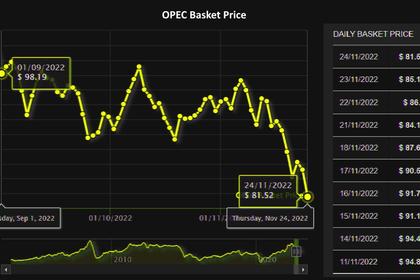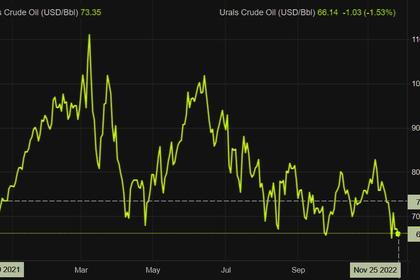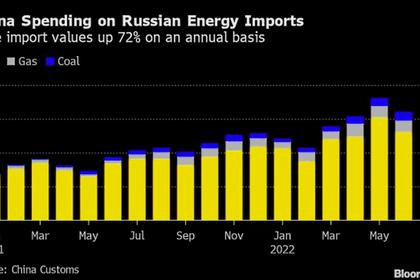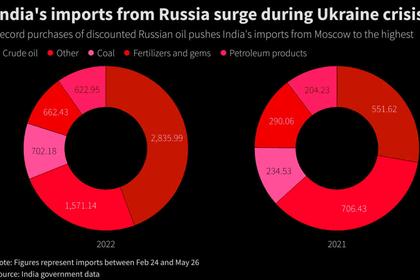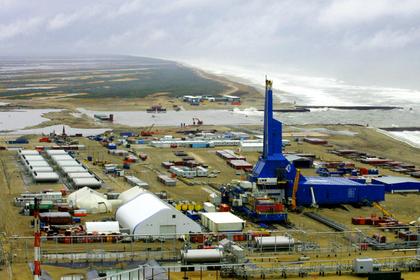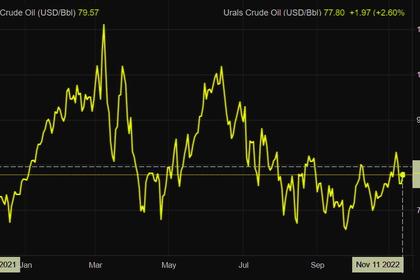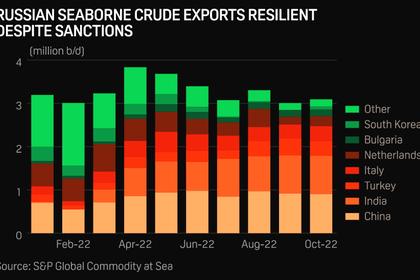
RUSSIAN OIL SANCTIONS ANEW
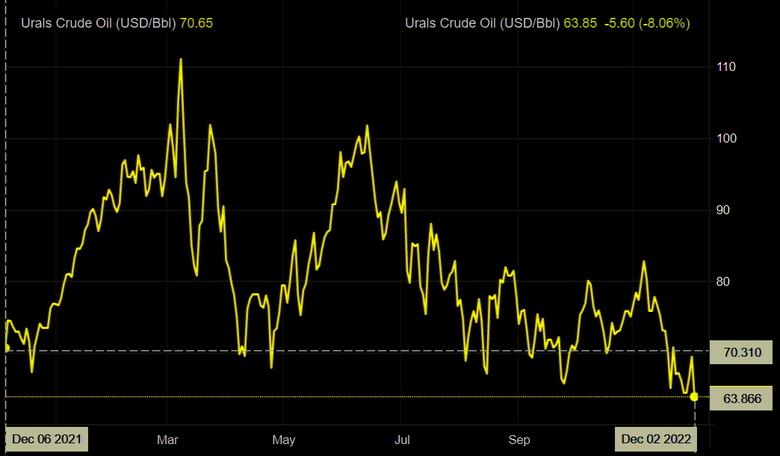
BLOOMBERG - Dec. 2, 2022 - After months of planning and negotiations, the biggest tranche of sanctions on Russian oil to date take effect on Monday. How big their impact will be remains uncertain.
The Group of Seven clinched a last-minute deal to cap the price of Russian crude at $60 per barrel. Anyone wanting to access key services that the bloc provides -- especially insurance -- will have to pay that price or less. The same goes for European tankers, especially the giant Greek fleet.
But there are still enormous unanswered questions that will shape the impact of the measures on the oil market, including the depth of non-European insurance markets, the appetite of some tanker owners to participate in trade with Russia, and exactly how effective enforcement of the cap can be.
Here’s everything you need to know about what could change for Russian oil.
Who is sanctioning what?
As of Monday, the European Union will ban the import of crude oil produced in Russia and transported by sea. There is an exemption for Bulgaria, which can continue to import Russian crude by sea until the end of 2024, under contracts that were concluded before June 4, 2022.
Pipeline flows are unaffected, although Germany and Poland both said they would cease such imports by the end of 2022.
The UK and EU will also introduce a ban on maritime services for the transport of Russian oil, including to third countries. The list of banned services includes insurance, brokerage and crucially the EU-based tanker fleet including ships owned in Greece and Cyprus. These restrictions won’t apply if oil is bought at or below the capped price.
How will the global cap work?
If crude oil is traded at or below $60, then countries participating in the cap, which include the Group of Seven nations, the European Union and Australia, will allow access to key services.
There is one price cap for all of Russia. The $60 level will be about $10 above the key Urals grade -- shipped from the country’s western ports -- but below ESPO, which is loaded onto tankers at Kozmino in Asia. That grade is above $70, according to data provided by Argus Media.
The cap price is the value when the crude is loaded onto a vessel. It doesn’t include the cost of transportation and legal fees. It will apply from the receipt of a cargo onto a ship until it is passed through customs in a new country. Once the oil has been refined, it will no longer be subject to the cap, but if it is blended with another type of crude then it still is.
The cap will be regularly reviewed.
How will insurance work?
Traditionally, ships get cover for disasters such as oil spills through a London-based organization called the International Group of P&I Clubs. The IG, as it’s known, uses a reinsurance program that is heavily dependent on the EU, meaning that its services will only be allowed if oil is shipped under the cap.
But there are some alternatives. Russia’s Ingosstrakh Insurance Co. was the top Russian underwriter of P&I cover in October, and could be an option. However, the company has offered no indication it’s rushing to fill the void. And the depth of Russia’s insurance market is small in comparison to traditional ones.
Chinese authorities are yet to recognize Russian insurance, Russia’s deputy transport minister said last week, however India and Turkey do. An Indian refiner has previously said Russia is insuring its crude shipments.
Russia’s response
Russia has consistently said it won’t sell oil to countries that participate in the price cap. Deputy Prime Minister Alexander Novak said last week that the plan may result in significant risks for commodity markets, including market deficits.
But Foreign Minister Sergei Lavrov said Thursday that Russia would continue to negotiate with its partners “directly” over the pricing of crude sales, noting that “there is always an element of balance of interests,” including on prices. This leaves Russia room to makes sales below the cap while claiming it is irrelevant.
The countries that Russia currently sells to have not signed up to the cap, but the US and allies hope they will use it as leverage to extract discounts.
A host of countries continue to import oil from Russia along the Druzhba pipeline, Europe’s largest, while up to 1.5 million barrels a day of oil from Kazakhstan is shipped from a terminal close to Russia’s Novorossiysk port. Those aren’t banned.
It’s not clear what Russia can or will to do to punish companies that participate in the cap. Doing so could hurt its interests.
Who is shipping?
A burgeoning shadow fleet of oil tankers has emerged to ship Russian crude oil. Whether that fleet will be large enough to maintain a full rate of exports in the long term is not yet clear.
A growing number of vessels are registered to unknown owners, and the scrapping of old tankers has all but halted. Still, the growing risk of carrying Russian oil has seen tanker earnings spike for cargoes loading after Dec. 5.
That’s fed all the way into Urals crude oil prices already.
Since the war broke out, a raft of new traders have been marketing Russian oil to buyers in Asia, as traditional entities stepped away. Those include companies like Coral Energy, Wellbred and Montfort. Businesses trading out of Dubai without links to the EU aren’t subject to the bloc’s sanctions, but would still need key services like insurance and finance.
What has been exempted?
The price cap should only apply to seaborne deliveries of Russian oil -- flows via the key Druzhba pipeline to Europe are still allowed. There’s also a carve out for Kazakhstan’s CPC crude oil blend which is exported from a Russian port.
However, further talks could yield some tweaks to the rules.
Bulgaria has an exception that allows it to continue importing crude oil due to its “specific geographical exposure,” according to the EU’s sixth sanctions package. Alongside that, Japan received an exemption for oil produced from the Sakhalin-2 project destined for Japan.
The UK, which had been waiting on the EU, has an exceptions in place for environmental emergencies, which would allow the clean up of spills. The EU is likely to follow suit. That came after Turkey said it was planning more stringent insurance checks due to the risk of environmental damage.
-----
Earlier:
